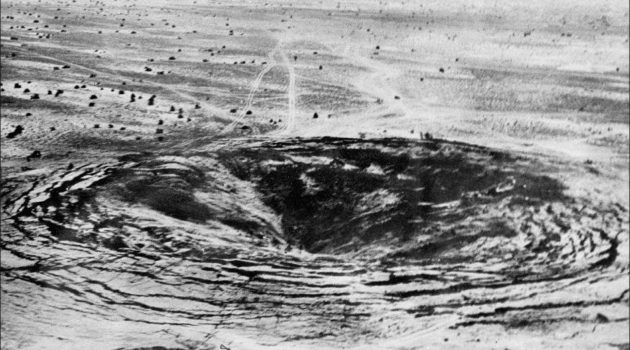India conducted its first nuclear detonation, described by India as a “peaceful nuclear explosion,” on 18 May 1974. This test, which may have only been partially successful, demonstrated a claimed yield of 12 kt. The device was emplaced in a vertical shaft and detonated at a depth of 107 meters. It is reported that the American intelligence community estimated that the actual yield was in the range of 4 to 6 kilotons. The test produced a crater with a radius of variously reported at between 47 and 75 meters and a depth of about 10 meters. High-resolution commercial satellite imagery discloses that the subsidence area proper has a radius of about 60 meters, and is surrounded by a distinctive heart-shaped perimeter with a radius of roughly 80 meters.
Smiling Buddha (MEA designation: Pokhran-I) was the assigned code name of India’s first successful nuclear bomb test on 18 May 1974. The bomb was detonated on the army base Pokhran Test Range (PTR), in Rajasthan, by the Indian Army under the supervision of several key Indian generals. Pokhran-I was also the first confirmed nuclear weapons test by a nation outside the five permanent members of the United Nations Security Council. Officially, the Indian Ministry of External Affairs (MEA) characterized this test as a “peaceful nuclear explosion”.

